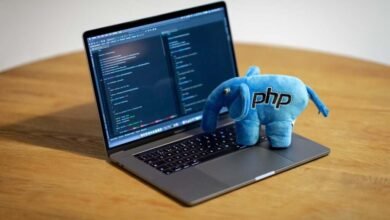
Boston Dynamics Robots In the rapidly advancing world of robotics, Boston Dynamics stands as a frontrunner, pioneering innovations. From their impressive agility to their ability to work autonomously in various settings. Boston Dynamics robots have the potential to transform industries ranging from manufacturing to healthcare. Their state-of-the-art robotic systems have captivated not only tech enthusiasts but also industries looking to enhance efficiency and productivity.
The Evolution of Boston Dynamics Robots
Founded in 1992 as a spin-off from the Massachusetts Institute of Technology (MIT). Boston Dynamics originally focused on developing robots for military applications. Over time, the company expanded its vision and diversified its product offerings.
Some of the key robots developed by Boston Dynamics include Spot, Atlas, and Stretch. \
Spot: The Agile Robot for Multiple Environments

Spot is arguably one of the most recognizable robots from Boston Dynamics. Boston Dynamics Robots What sets Spot apart is its ability to traverse rugged terrain with ease, providing valuable assistance in places that are otherwise inaccessible to humans.
Spot’s applications are vast, ranging from inspecting hazardous areas in nuclear power plants to assisting law enforcement agencies in critical situations.]
Key Features of Spot
- Autonomous Navigation: Spot can move through complex environments with minimal human intervention, using its advanced sensor suite to detect obstacles and plan routes.
- Payload Capacity: Spot can carry up to 14kg of equipment, making it useful for surveying, transporting tools, and other operational tasks.
Atlas: Pushing the Boundaries of Humanoid Robotics
Atlas is Boston Dynamics’ most advanced humanoid robot.Its agility and balance are nothing short of remarkable. Capable of running, jumping, and even performing backflips with precision.
Atlas has garnered significant attention due to its role in demonstrating the future potential of robots in human-like tasks. Its ability to adapt to diverse environments and perform complex movements makes it a strong candidate for use in disaster response, rescue missions, and even medical assistance.
Key Features of Atlas
- Bipedal Mobility: Atlas can walk, run, and jump on two legs, much like a human, making it suitable for environments that require human-like movement.
- Perception and Control: Atlas uses sophisticated sensors to navigate its surroundings and avoid obstacles. It can also interact with objects in its environment using its dexterous hands.
- Power and Speed: Capable of performing high-energy tasks like running and jumping, Atlas showcases a glimpse of what future robots. Might be able to achieve in terms of speed and physical prowess.
Stretch: Optimizing Warehouse Operations Boston Dynamics Robots
Stretch is Boston Dynamics’ newest robot, designed with a focus on logistics and warehouse automation. This robot specializes in unloading and loading goods from trucks and containers, revolutionizing the way warehouses operate.
Stretch’s ability to autonomously manage repetitive tasks significantly reduces operational costs, streamlines processes, and increases productivity in large-scale distribution centers.
Key Features of Stretch
High-Performance Arm: Stretch’s robotic arm is equipped with advanced sensors that allow it to handle boxes of varying sizes and weights.
Computer Vision: Stretch uses state-of-the-art computer vision technology to identify packages and plan the most efficient way to load or unload them.
Applications of Boston Dynamics Robots Across Industries

While Boston Dynamics robots have been most notably associated with military and defense, their applications extend far beyond those industries. Today, their robots are being employed in sectors such as construction, healthcare, logistics, and agriculture. The versatility and adaptability of these machines make them suitable for tasks that were once considered the exclusive domain of humans.
- Healthcare: Atlas has the potential to assist in elderly care or help medical professionals in surgeries or patient care-thanks to its ability to navigate complex environments.
- Agriculture: Boston Dynamics robots can help farmers by monitoring crops, planting seeds, or even herding livestock, all while collecting valuable data to improve agricultural practices.
- Logistics: Stretch’s role in warehouse automation highlights the transformative power of robots in logistics, helping businesses optimize supply chains and reduce labor costs.
The Future of Robotics with Boston Dynamics Robots

Boston Dynamics continues to push the envelope of what’s possible in the field of robotics. Their ongoing research into artificial intelligence, machine learning. Biomechanics suggests that the next generation of robots will be even more intelligent, adaptable, and capable.
As the integration of robots into various industries becomes more commonplace. The future could see robots performing a broader range of tasks. The assisting in emergency situations to enhancing everyday life for individuals.
Conclusion:
The continued evolution of marks a turning point in the relationship between humans and machines. Their potential to perform complex tasks autonomously opens up possibilities for increased efficiency, safety, and productivity across numerous sectors.
Click Here: Top Technology Publications



